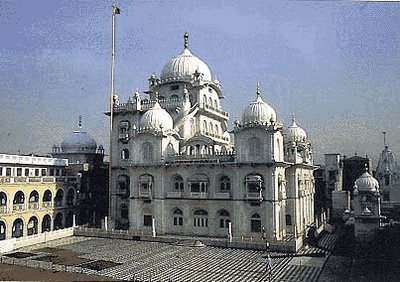had a queen named “Patali” which means “Trumpet flower”. The king loved the queen so much that he created a city for her with a magic stroke and named the city “Pataligram.” Later, the king changed the city name to “Pataliputra” in honor of the queen’s first born. In Sanskrit, “Putra” means son. Well friends, the legend could be true or not but the place named Pataliputra still exists today as the capital of Bihar in India. Through its long history, the city is known as Pataligram, Pataliputra, Kusumpur, Pushpapura, and Azimabad. During the reign of Sher-Shah-Suri, it got its present name Patna.

Gol Ghar Patna
There are two explanations about the origin of the name Patan. According to one explanation, the name derived from the name of a Hindu Goddess. The second explanation is that Patna was a port city. Hence, it is called “Pattan.” In Sanskrit language “Pattan” means port.
Megasthenes, the famous Greek traveler and geographer, talked about the city named Pataliputra in his book. Patna’s recorded history can be traced back to 490 B.C. Ajatshatru; the King of Magadh, made the city his capital. Lord Buddha passed through this city and he prophesized about the future prosperity and ruination of this city.

Gurudwara Patna Sahib, Birth Place of The Tenth Sikh Guru, Sri Guru Gobind Singh
The present day Patna is approximately a 15 kilometer long and 5-7kilometer wide city, situated on the southern bank of the Ganges. The city is a pilgrim for Jains and Buddhists. Vaishali, Rajgriha (King’s House), Nalanda, Bodhgya and Pawarpuri are major pilgrim sites for Jains and Buddhists. The tenth Guru of Sikhs, Guru Gobind Singh, was born in Patna. Hence, this is also a major religious site for Sikhs.
Aside from being the administrative center, Patna also serves as a major education center of Bihar. Students from all over Bihar come here to study. Reputed institutions include: Notre Dame Academy, St. Dominic Savio's High School, Don Bosco Academy, St Michael's Higher Secondary School, D.A.V., Khagaul, St Karen's School,
Gyan Niketan. In 1917, Patna University was established. It is one of the oldest Universities in the Indian subcontinent. Under the university, there are eleven colleges including Bihar College of Engineering, Science College, Bihar National College Patna Women's College, Patna College and Patna Medical College & Hospital.
Since it is a port city, Patna has been an important business center from ancient times. The rice of Patna was very famous among the Indian royals and in Europe. In Ain-i-Akbari (the famous book about the Mughal Emperors) the author talks about Patna. It was famous for paper, stone and glass industries. In the colonial period, Patna attracted French, Danes, Dutch and Portuguese. The English started a factory and started trading silk and calico. Present day Patna is heavily dependent on agriculture. Grain, sugarcane, sesame, and medium-grained Patna rice are the major export products.
Patna is a city with rich historical background. The ruins of old monuments would give the tourists an idea about the glorious past of the city. Here are some of the tourist sites of city:
Agam Kuan: A very deep well dug during the Ashokan period.
Hanuman Mandir: Situated in front of the Patna Junction, the central railway of the city, it is one of the most favorite deities of the locals.
Kumhrar: A place where you can see the ruins of Ashokan Patliputra.
Takht Shri Harmandir Saheb: The birth place of Guru Gobind Singh. It was decorated by Maharaja Ranjit Singh.
Martyrs Memorial: Built in the memory of the students of seven schools and colleges who were killed by British soldiers in 1942.
Golghar: A bee hive shaped granary one of the oldest buildings in Patna.
Other major tourist sites includes Patna Museum, Khuda Baksh Oriental Library, Begu Hajjam's mosque, Pathar ki Masjid, Qila House, Sadaqat Ashram, Zoological and Botanical garden, Padri Ki Haveli, Bankipore Club, Darbhanga House.
The transportation system of Patna is very developed. Lok Nayak Jayaprakash Airport has daily flights to major Indian cities like Delhi, Calcutta, Mumbai, Ranchi, and Lucknow. National Highway No.31 passes through Patna. Bailey Road is the longest road of Patna. The Railway station of Patna has trains to all the major cities of India. There are ferry services, and cargo service by the river Ganges